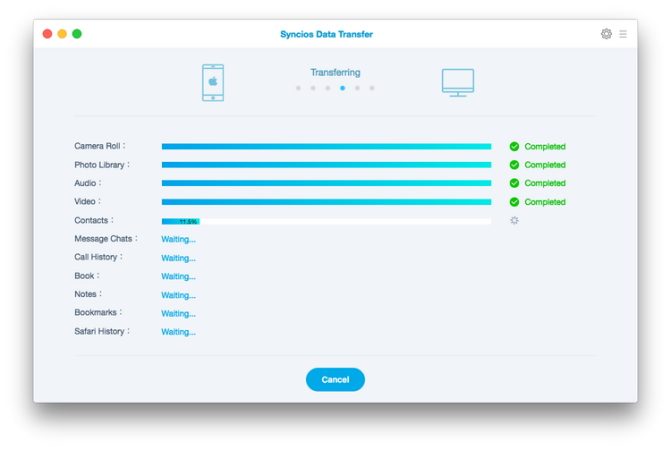

- #Easy phone sync for mac full
- #Easy phone sync for mac plus
- #Easy phone sync for mac download
- #Easy phone sync for mac mac
But this overwrites all messages on the second Mac, which may result in lost data.ĭoing a bidirectional, message-by-message sync is possible but messy. The only reliable way to do it for two Macs is to quit Mail on both machines and then copy one Mac’s entire ~/Library/Mail/V3 folder (in El Capitan) or ~/Library/Mail/V2 folder (in Yosemite or earlier) to the other’s. If you use POP accounts, syncing messages between computers is much harder. Then follow the prompts to set up your account.
#Easy phone sync for mac plus
#Easy phone sync for mac full
Use your full Gmail address as the username and the following server addresses: Then set up the IMAP account in your email client of choice. In the IMAP Access section, make sure Enable IMAP is selected.From the gear pop-up menu, choose Settings, and then click Forwarding and POP/IMAP.Log in to your Gmail account (using this link or whichever URL you normally use if you have a Google Apps account with a custom domain).Sync Email with Googleįirst, make sure IMAP is enabled for your Google account: Many other mail servers also offer Web-based configuration of rules or filters consult your email provider for details. From the gear pop-up menu, choose Settings and then click Filters and Blocked Addresses. In Gmail, log in to your Gmail account (using this link or whichever URL you normally use if you have a Google Apps account with a custom domain). If you use iCloud for email, log in to, select Mail, and from the gear menu, choose Preferences > Rules to set up rules. And, you can switch clients or platforms without having to redo all your rules. That way they can pre-sort email delivered to your iOS devices (which don’t have mail rules). Mail, Outlook, and most other desktop email apps have built-in rules or filters that let you process incoming mail-for example, filing less-important messages into special mailboxes or sending automatic replies if certain criteria are met.īut if you have the choice, I suggest setting up rules on your email server rather than in your client app. Keychain: Syncs account settings (such as username, password, and server addresses) for all your accounts.iCloud Drive: Syncs email signatures, flag names, rules, and smart mailboxes.ICloud can also sync other email-related data across Macs (only), as long as the appropriate checkbox in System Preferences > iCloud is selected: Fill in your settings as described on this support page. Other IMAP Client: Go to the app’s account settings and either select an existing iCloud account or create a new account.Make sure you’re signed in and Mail is turned on. iOS Device (Mail): Go to Settings > iCloud.Make sure you’re signed in and Mail is selected.
#Easy phone sync for mac mac

#Easy phone sync for mac download
Your email client would connect to your email server, download all your messages onto the computer, and then delete them from the server. Once upon a time, most people used a single computer for email. Broadcast an iTunes Library in Your Home.Broadcast and Share Games and Game Stats.Broadcast Browser Tabs to Other Devices.Share iPhone Calls and Texts across Devices.Share Your iOS Device’s Internet Connection.Sync Calendars and Reminders with Others.Sync Calendars and Reminders across Devices.


 0 kommentar(er)
0 kommentar(er)
